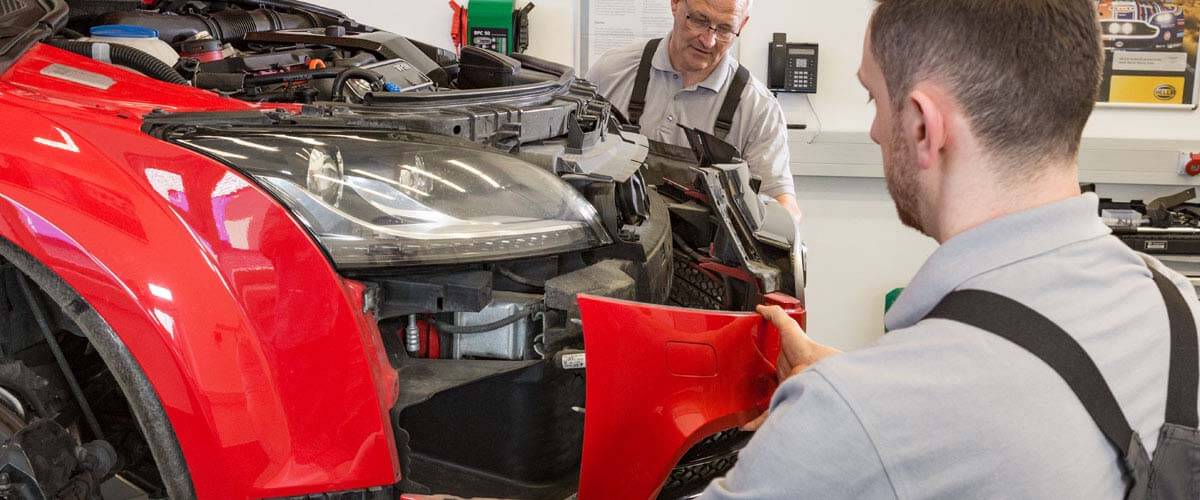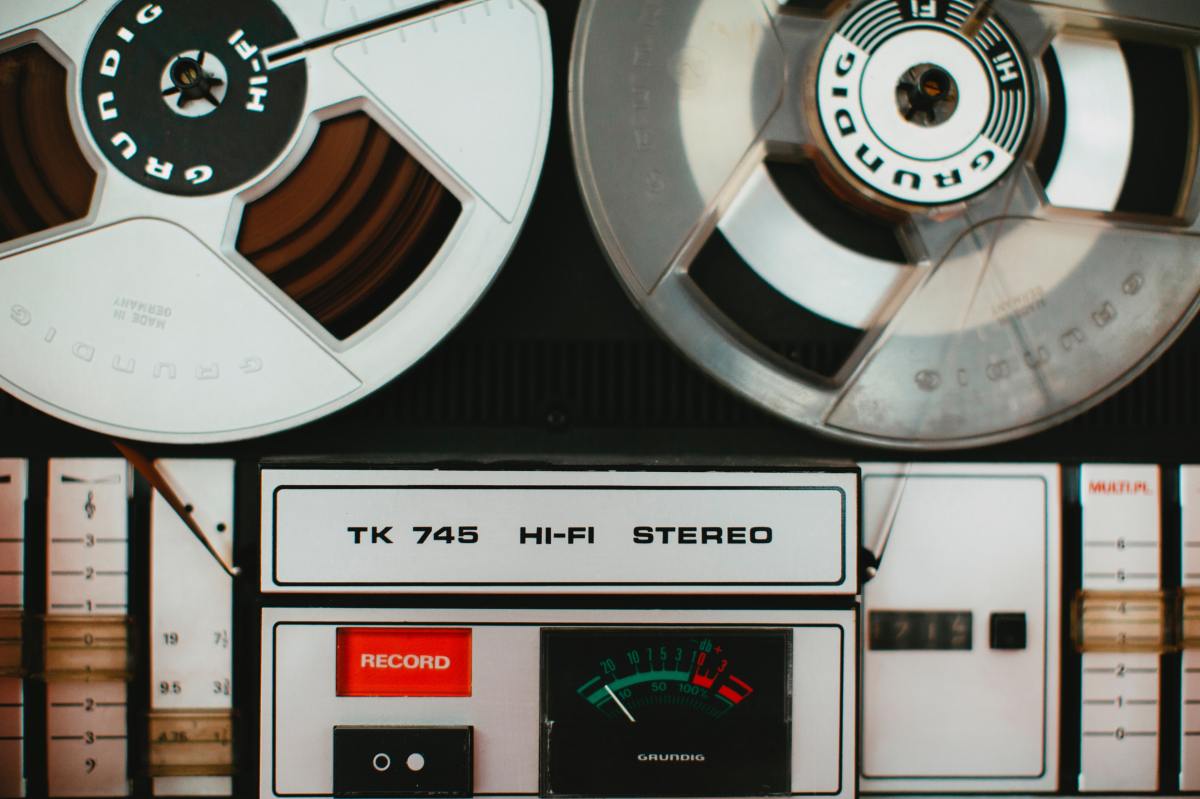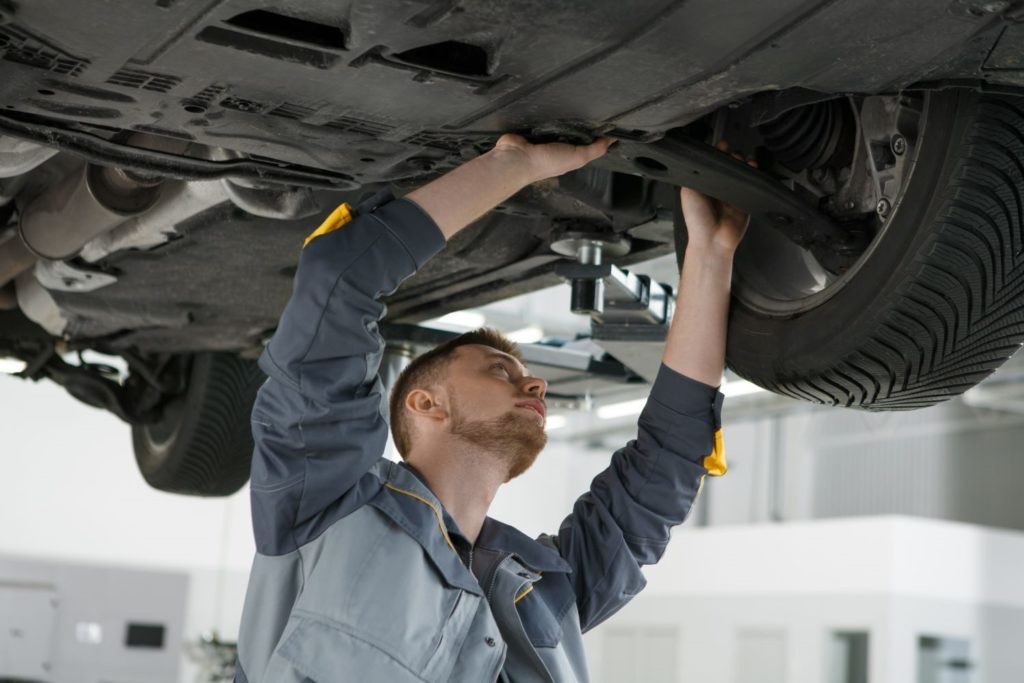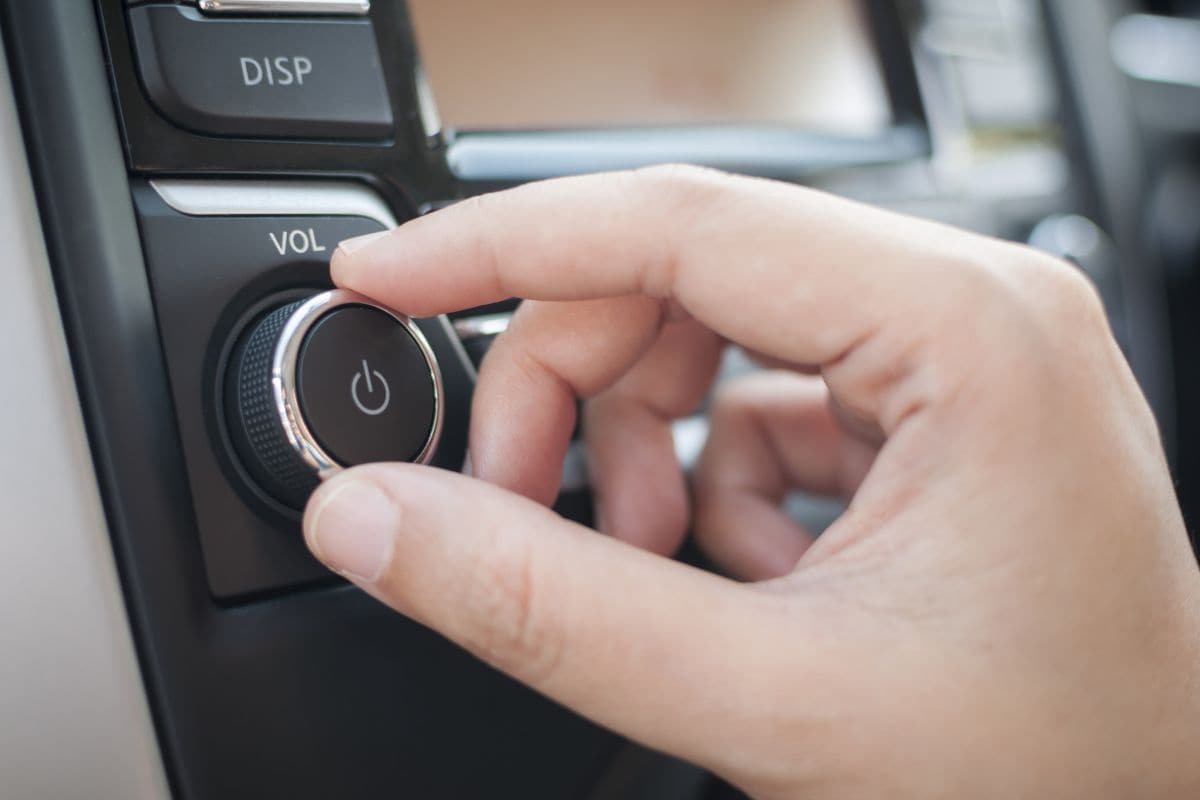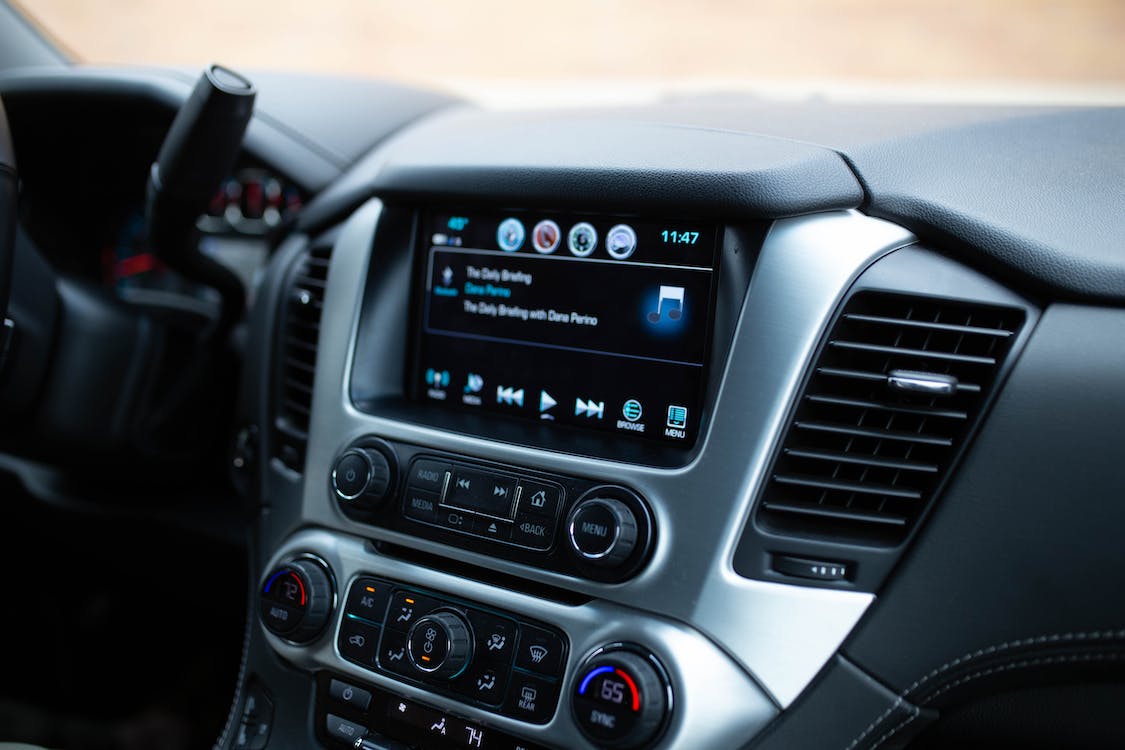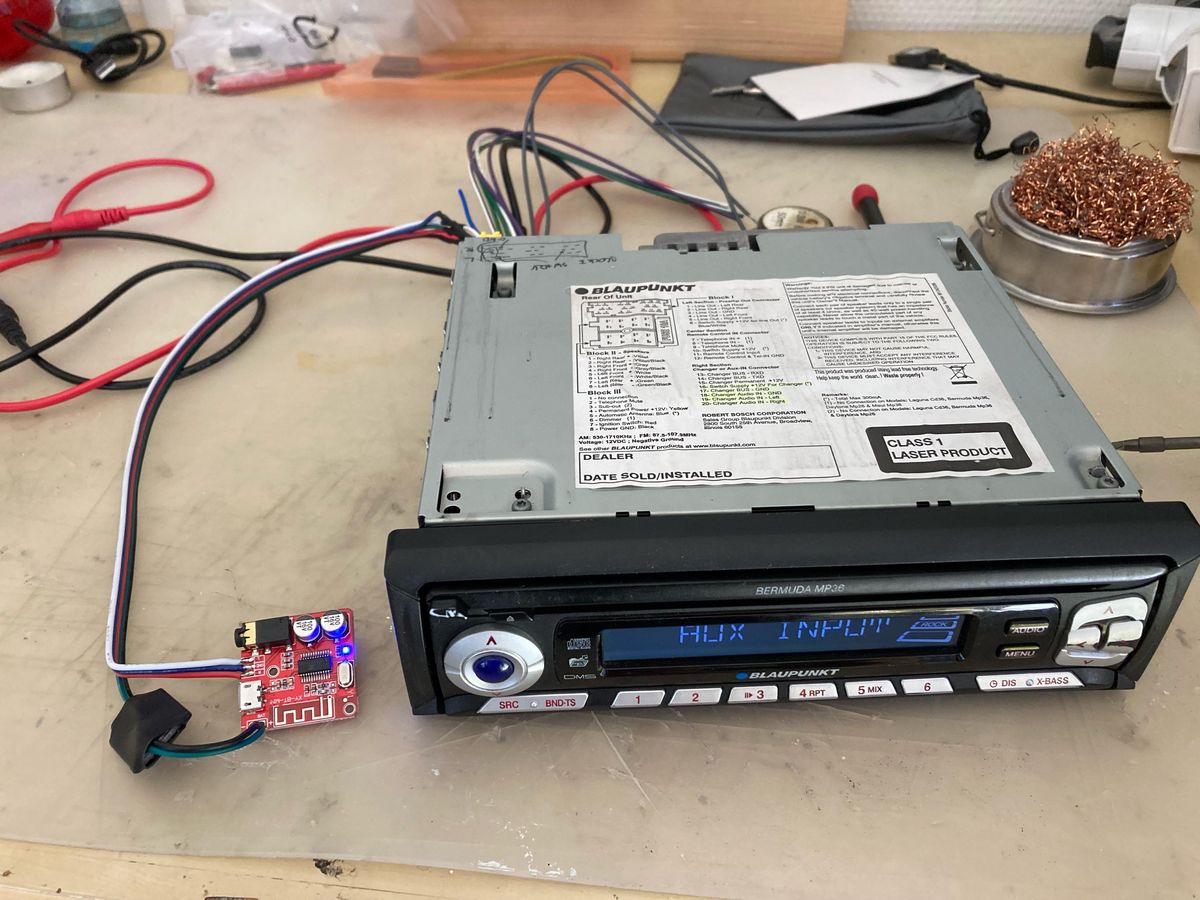Home>Production & Technology>Stereo>How To Make Car Stereo Sound Better


Stereo
How To Make Car Stereo Sound Better
Modified: January 22, 2024
Enhance your car stereo experience with these expert tips and tricks. Discover how to make your stereo sound better and enjoy superior audio quality on the road.
(Many of the links in this article redirect to a specific reviewed product. Your purchase of these products through affiliate links helps to generate commission for AudioLover.com, at no extra cost. Learn more)
Table of Contents
Introduction
When it comes to enjoying music on the go, a car stereo system plays a vital role in delivering high-quality audio. However, not all factory-installed car stereos are designed with optimal sound quality in mind. If you find yourself dissatisfied with the audio performance from your car’s stock stereo system, there are several steps you can take to significantly improve the sound quality.
Upgrading your car stereo system is a worthwhile investment that can enhance your driving experience, making those long road trips more enjoyable. Whether you’re a music enthusiast who appreciates every nuance and detail of your favorite tunes or simply someone who wants to experience better sound while commuting, this article will guide you through the process of making your car stereo sound better.
In this comprehensive guide, we will explore various strategies and techniques to upgrade your car stereo system. From upgrading the speakers to installing a subwoofer, each step will contribute to transforming your car into a concert hall on wheels. So, let’s dive in and discover how you can elevate your audio experience to the next level!
Understanding the Car Stereo System
Before delving into the process of improving your car stereo system, it’s important to have a basic understanding of its components. A typical car stereo system consists of several main elements that work together to deliver sound:
- Head Unit: This is the control center of your car stereo system. It contains the radio tuner, CD/DVD player, USB port, and other input options. The head unit allows you to control various audio settings and sources.
- Speakers: These are responsible for producing sound and reproducing the audio signals from the head unit. The number and size of speakers vary depending on the car model and audio system.
- Amplifier: An amplifier boosts the audio signal from the head unit and provides more power to the speakers. It improves overall sound quality and increases volume levels.
- Wiring: The wiring connects all the components of the car stereo system, ensuring proper signal transmission and power delivery.
Now that you have a basic understanding of the components, it’s time to identify the areas where your car stereo system can be improved. Start by evaluating the performance of your existing speakers. Factory-installed speakers are often made with cost-effectiveness in mind, resulting in average sound quality. Upgrading your speakers can provide a significant improvement in audio clarity, dynamic range, and overall sound reproduction.
Next, consider the power output of your head unit and whether it’s delivering enough power to your speakers. In many cases, stock head units have limited power outputs, which can limit the sound quality and volume levels. Adding an aftermarket amplifier can solve this issue by providing additional power to drive your speakers.
Lastly, the wiring and placement of speakers can also affect the audio performance. Poorly installed or loose wiring can introduce unwanted noise and negatively impact sound quality. Properly routing and securing wiring can minimize this issue. Additionally, the placement of speakers within the car can affect the soundstage and imaging. Experimenting with speaker placement can help achieve a more balanced and immersive audio experience.
By understanding the basic components of your car stereo system and identifying areas for improvement, you’re ready to embark on the journey of enhancing your audio quality. In the following sections, we will cover various techniques and upgrades that can make a significant difference in your car stereo system’s sound performance.
Upgrading the Speakers
One of the most effective ways to improve the sound quality of your car stereo system is by upgrading the speakers. Factory-installed speakers are typically made with cost-saving measures, resulting in subpar audio performance. By investing in higher-quality aftermarket speakers, you can greatly enhance the clarity, detail, and overall audio reproduction in your car.
When choosing new speakers, consider factors such as speaker size, power handling, sensitivity, and frequency response. Different car models have specific speaker sizes, so make sure to choose speakers that are compatible with your car’s requirements. Power handling refers to the ability of the speakers to handle the power output from your amplifier or head unit. Higher power handling allows for cleaner and louder sound reproduction.
The sensitivity rating of a speaker measures how efficiently it converts power into sound. Look for speakers with higher sensitivity ratings, as they require less power to produce the same volume compared to speakers with lower sensitivity. A wider frequency response range means the speakers can reproduce a broader range of frequencies, resulting in better audio fidelity.
When installing the new speakers, ensure proper fitment and securely fasten them in place. This will help prevent vibrations and unnecessary noise. Additionally, consider adding foam or rubber speaker baffles behind the speakers to reduce sound distortion and improve bass response.
Upgrading the speakers alone can significantly enhance your car audio experience. You’ll notice improved clarity and detail in the music, as well as enhanced bass response and overall sound reproduction. However, keep in mind that the quality of your source material, such as the audio files or streaming services, will also impact the sound quality.
Pairing your upgraded speakers with high-quality audio sources will result in the best audio performance. Consider using lossless audio formats like FLAC instead of compressed MP3 files. Additionally, streaming services that offer higher audio quality, such as Tidal or Spotify’s highest quality settings, will provide a more immersive listening experience.
By upgrading your car speakers and optimizing the audio sources, you’ll significantly improve the sound quality of your car stereo system. With clearer vocals, detailed instrumentation, and punchier bass, your favorite music will come to life during your daily commutes or long road trips.
Adding an Amplifier
If you’re looking to take your car audio system to the next level, adding an amplifier is a crucial step. While the factory-installed head unit may provide adequate power to the speakers, the addition of an amplifier can significantly enhance the overall audio quality and volume capabilities.
An amplifier essentially boosts the audio signal from the head unit and provides a higher power output to the speakers. This increased power allows for cleaner sound reproduction, improved dynamic range, and enhanced clarity at higher volume levels.
When choosing an amplifier, consider the power output, number of channels, and compatibility with your car stereo system. The power output should match the power requirements of your speakers. Additionally, consider the number of channels needed to accommodate your speaker setup. For instance, a 2-channel amplifier is suitable for a basic setup with two front speakers, while a 4-channel amplifier can power a full range speaker system with front and rear speakers.
During the installation process, ensure proper wiring and grounding for the amplifier. It’s important to use high-quality wiring and connect the amplifier to a dedicated power source with an appropriate fuse. Proper grounding helps prevent unwanted noise and interference in the audio system.
In addition to enhancing power delivery to the speakers, amplifiers often come with built-in features such as adjustable crossovers, equalization controls, and bass boost. These features allow you to fine-tune and customize the sound according to your preferences. Adjusting the crossover settings helps direct the appropriate frequencies to the right speakers, ensuring optimal sound reproduction. Equalization controls enable you to fine-tune the frequency response to compensate for any audio imbalances. Bass boost adds extra emphasis to the low frequencies, giving your car audio system that extra punch.
The addition of an amplifier to your car stereo system can truly elevate the audio experience. With increased power output, improved sound clarity, and the ability to fine-tune the audio settings, you’ll immerse yourself in rich, detailed sound while driving.
It’s worth mentioning that when adding an amplifier, you might also want to consider upgrading the wiring and electrical system of your car to handle the increased power demands. This includes upgrading the power and ground wires for the amplifier, as well as adding a capacitor or upgrading the battery to ensure a stable power supply.
Overall, adding an amplifier to your car stereo system is a worthwhile investment that will deliver a significant boost in audio performance. With improved power output and enhanced audio controls, you’ll be able to enjoy your favorite music with exceptional clarity, detail, and volume.
Improving the Wiring
The wiring in your car stereo system plays a crucial role in ensuring proper signal transmission and power delivery. Upgrading and optimizing the wiring can have a significant impact on the overall performance and sound quality. Here are some steps you can take to improve the wiring in your car:
- Use High-Quality Speaker Wire: Factory-installed speaker wires are often thin and made of low-quality materials, which can result in signal loss and reduced audio quality. Replace the stock speaker wires with high-quality, thicker gauge wires to minimize resistance and ensure better signal transmission to the speakers.
- Upgrade RCA Cables: If you’re using an amplifier, consider upgrading the RCA cables that connect the head unit to the amplifier. Higher-quality RCA cables can help reduce interference and maintain cleaner audio signals.
- Ensure Proper Grounding: Proper grounding is essential for preventing noise and interference in the car stereo system. Make sure to connect the ground wire securely to a clean, metal surface of the car chassis. This will help minimize unwanted noise and improve overall audio performance.
- Secure and Tidy Wiring: Properly routing and securing the wiring in your car stereo system can minimize rattles and vibrations, which can negatively impact sound quality. Use zip ties or cable management clips to organize and secure the wiring neatly, ensuring a clean and professional installation.
- Consider Signal Dampening: If you’re experiencing unwanted noise, such as engine noise or alternator whine, consider using signal dampening materials. These materials are designed to block and absorb noise, resulting in cleaner audio signals.
In addition to these steps, it’s essential to ensure that all connections are tight and secure. Loose or poorly connected wires can cause signal loss and lead to audio disturbances. Take the time to double-check all connections and tighten them as necessary.
The overall goal of improving the wiring in your car stereo system is to minimize signal loss, reduce interference, and create an optimal environment for audio transmission. By upgrading the speaker wires, RCA cables, and ensuring proper grounding and secure routing of all the wiring, you can greatly enhance the audio performance and enjoy cleaner, more immersive sound in your car.
Remember to take your time and follow proper installation techniques when working with the wiring. If you’re unsure about any aspect of the wiring process, it’s always recommended to consult a professional car audio installer for assistance.
By paying attention to the wiring and ensuring it’s optimized for your car stereo system, you’ll be on your way to experiencing the full potential of your audio setup with improved sound quality and a more enjoyable listening experience.
Soundproofing the Car
If you want to create a quiet and immersive audio environment in your car, soundproofing is a crucial step. Soundproofing not only reduces external noise from entering the cabin but also improves the overall acoustics, allowing your car stereo system to shine. Here are some techniques to soundproof your car:
- Install Sound Deadening Material: Use sound deadening materials such as mass loaded vinyl (MLV), foam insulation, or butyl rubber sheets to reduce vibration and block external noise. Apply these materials to the doors, floor, roof, and trunk to create a sound barrier.
- Seal Door and Window Gaps: Inspect the seals around the doors and windows for any gaps. These gaps can allow external noise to enter the cabin. Replace or repair any worn-out seals to minimize noise leakage.
- Upgrade Weatherstripping: Improve the weatherstripping around the doors and windows to create a tighter seal. This will not only reduce noise but also improve insulation against external temperatures.
- Use Acoustic Foam: Add acoustic foam to areas where it can help absorb and reduce interior reflections, such as the door panels and interior surfaces. This will help improve the overall audio clarity and reduce echoes.
- Consider Underbody Insulation: Install underbody insulation to reduce road noise and vibrations. This can be particularly beneficial for reducing low-frequency vibrations and enhancing the overall audio experience.
By implementing these soundproofing techniques, you can create a more controlled and immersive audio environment within your car. Not only will this make your music sound clearer and more detailed, but it will also enhance the overall driving experience, allowing you to enjoy your favorite tunes without unwanted distractions.
It’s important to note that while soundproofing your car can significantly improve the audio experience, it is a time-consuming process that requires proper installation techniques. Consider consulting a professional car audio installer who specializes in soundproofing for optimal results.
Furthermore, it’s essential to strike a balance between soundproofing and the weight added to the car. Adding too much sound deadening material can increase the overall weight, potentially affecting fuel efficiency and vehicle performance. Therefore, it’s recommended to choose materials wisely and only apply them to areas that will have the most significant impact on noise reduction.
By soundproofing your car, you’ll create a more tranquil and enjoyable audio environment, allowing you to fully appreciate the sound quality of your car stereo system. So, go ahead and take the necessary steps to reduce outside noise and optimize your in-car audio experience.
Adjusting the Equalizer Settings
The equalizer is a powerful tool that allows you to fine-tune the audio frequencies in your car stereo system. By adjusting the equalizer settings, you can customize the sound to your preferences and improve the overall audio quality. Here are some tips on how to effectively adjust the equalizer:
- Listen to Reference Tracks: Start by selecting a few reference tracks that represent the type of music you listen to most frequently. These tracks should cover a wide range of frequencies and instrumentation.
- Set the EQ to Flat: Begin by setting all the equalizer bands to their neutral or flat position. This gives you a baseline to work with and allows you to hear the original sound without any adjustments.
- Adjust the Bass: If you find the bass to be too weak or overpowering, start by adjusting the low-frequency bands. Increase or decrease the bass as needed, keeping in mind that too much bass can muddy the overall sound, while too little can make it sound thin.
- Tweak the Midrange: The midrange frequencies are responsible for vocals and instruments. Adjusting the midrange can help bring out the clarity and presence of the vocals and instruments. Experiment with the midrange bands to find the right balance.
- Enhance the Treble: The treble frequencies add sparkle and detail to the music. Adjust the high-frequency bands to enhance or soften the treble as desired. Be careful not to introduce harshness or sibilance by overdoing it.
- Consider Presets: Many car stereo systems come with preset EQ settings tailored for different genres, such as rock, jazz, or pop. Experiment with these presets to see if they provide a sound signature that suits your music preferences.
- Make Small Adjustments: It’s important to make small adjustments to the equalizer settings and listen to the changes as you go. Avoid drastic changes that can result in an unnatural or unbalanced sound. Fine-tuning the EQ requires patience and careful listening.
Remember that the ideal equalizer settings will vary based on personal preference, the acoustics of your car, and the quality of your audio sources. Take the time to explore different settings and trust your ears to find the right balance. It may be helpful to make adjustments while listening to a variety of music to ensure that your equalizer settings work well across different genres and tracks.
Additionally, keep in mind that the quality of your audio files or streaming services will also impact the sound. Using higher-quality audio formats and selecting streaming services with better audio quality options can further enhance the audio experience.
By adjusting the equalizer settings, you can tailor the sound to your liking, compensate for any audio imbalances, and maximize the potential of your car stereo system. With a well-tuned equalizer, you’ll enjoy a cleaner, more balanced, and immersive audio experience while on the road.
Enhancing with Sound Dampening Materials
Sound dampening materials are an effective way to improve the audio quality in your car stereo system. These materials help reduce vibration, eliminate rattles, and minimize external noise, resulting in a cleaner and more immersive sound experience. Here’s how you can enhance your car’s audio system with sound dampening materials:
- Apply Dynamat or Similar Products: Dynamat is a popular brand of sound deadening material that is often used in car audio installations. It is a self-adhesive material that you can apply to the metal panels of your car, such as the doors, floor, and trunk. It helps reduce vibrations and resonance, resulting in improved sound quality.
- Add Foam or Rubber Insulation: In addition to a product like Dynamat, you can also add foam or rubber insulation to specific areas in your car. Apply it behind the door panels, on the firewall, and in other potential sound-leaking areas. These materials absorb sound and vibrations, further enhancing the audio experience.
- Seal Speaker Openings: Ensure that there are no gaps or openings around the speaker cutouts in your car doors. Use foam gaskets or silicone sealant to seal off any openings. This will prevent sound leakage and ensure that sound is directed towards the interior of the car.
- Soundproof the Trunk: If you have a subwoofer or an amplifier located in the trunk, consider soundproofing this area as well. Apply sound dampening material to the trunk floor and sides to reduce vibrations and eliminate rattles that can interfere with the audio quality.
- Insulate the Engine Compartment: The engine compartment can produce a significant amount of noise that can leak into the cabin. Use heat-resistant and sound-absorbing materials to insulate this area and minimize engine noise from reaching the interior of the car.
While applying sound dampening materials can be a time-consuming process, the results are well worth it. By reducing vibrations, eliminating rattles, and blocking external noise, you’ll notice a significant improvement in the clarity and quality of your car’s audio system.
It’s important to follow the manufacturer’s instructions when applying sound dampening materials, as proper installation techniques are crucial for optimum results. If you’re unsure about the installation process, it’s recommended to seek professional assistance from a car audio installer.
By enhancing your car’s audio system with sound dampening materials, you’ll create a more controlled and immersive sound environment. Enjoy your favorite music with reduced external noise, enhanced clarity, and an overall higher quality audio experience while driving.
Installing a Subwoofer
If you’re looking to add deep, powerful bass to your car audio system, installing a subwoofer is a game-changer. A subwoofer is a specialized speaker designed to reproduce low-frequency sounds, providing a rich and immersive bass experience. Here’s a step-by-step guide on how to install a subwoofer:
- Choose the Right Subwoofer: Select a subwoofer that fits your car’s available space and matches your audio preferences. Consider factors such as size, power handling, and enclosure type. Additionally, ensure that your amplifier can power the subwoofer effectively.
- Choose an Enclosure: There are different types of enclosures to house your subwoofer, including sealed, ported, and bandpass enclosures. Each has its own advantages and characteristics. Choose an enclosure type that suits your desired bass response and the available space in your car.
- Select a Mounting Location: Decide where you want to install the subwoofer in your car. Popular locations include the trunk, rear seat area, or under a seat. Ensure that there is enough space and that the subwoofer won’t interfere with other components or passengers.
- Prepare the Mounting Surface: Clean and prepare the mounting surface for the subwoofer and enclosure. Remove any debris, carpeting, or interior panels that may hinder the installation process.
- Connect Wiring: Run the necessary wiring from your amplifier to the subwoofer location. This includes power, ground, and remote turn-on wires. Be sure to use appropriate gauge wiring to handle the power requirements of the subwoofer.
- Install the Subwoofer and Enclosure: Mount the subwoofer and enclosure securely in the chosen location. Use screws, brackets, or enclosures designed for your specific car model to ensure a secure and vibration-free installation.
- Wire the Subwoofer: Connect the subwoofer to the amplifier using speaker wire or RCA cables, depending on your amplifier’s setup. Follow the wiring diagram provided with your subwoofer and amplifier to make the proper connections.
- Tune the Subwoofer: Once the subwoofer is installed and wired, it’s important to tune it properly. Adjust the gain, crossover, and phase settings on your amplifier to achieve the desired balance and integration with the rest of your car audio system.
It’s worth noting that installing a subwoofer may require some technical expertise and knowledge of car electrical systems. If you’re unsure about any aspect of the installation process, it’s recommended to consult with a professional car audio installer.
By adding a subwoofer, you’ll enhance the low-frequency performance of your car audio system, elevating your listening experience with deep, powerful bass. Whether you enjoy heavy bass-driven music genres like hip-hop or simply want to feel the impact of explosions in movies, a well-installed subwoofer will bring a new level of excitement to your car audio setup.
Fine-tuning the Audio System
After installing and upgrading various components of your car audio system, it’s important to fine-tune the audio settings to achieve the best possible sound quality. By making small adjustments and finding the right balance, you can optimize the audio performance and tailor it to your preferences. Here are some tips for fine-tuning your car audio system:
- Balance and Fade: Adjust the balance and fade controls to ensure that the sound is evenly distributed among all speakers. This will create a balanced and immersive audio experience, regardless of your seating position in the car.
- Experiment with Time Alignment: Time alignment adjusts the audio playback timing to ensure that sound arrives at your ears simultaneously. Use the time alignment feature in your head unit or DSP (Digital Signal Processor) to align the speakers to your listening position for better sound staging and imaging.
- Adjust the Crossover: The crossover settings determine the frequency range that each speaker handles. Experiment with the crossover points to achieve a seamless transition between the speakers, ensuring that each speaker is playing within its optimal frequency range.
- Play with the Equalizer: Refine the equalizer settings further to fine-tune the sound. Experiment with different frequencies and adjust the equalizer bands to enhance the audio according to your preferences and the characteristics of your car audio system.
- Test Different Audio Sources: Try out various audio sources, such as different genres of music, podcasts, or audiobooks, to ensure that the audio settings work well across different types of content.
- Utilize Sound Imaging Techniques: Utilize advanced sound imaging techniques like binaural recordings or spatial audio to truly immerse yourself in a three-dimensional sound experience. These techniques can add depth and realism to your music.
Remember, fine-tuning is a continuous process that requires patience and careful listening. Making subtle adjustments and periodically re-evaluating the sound will help you achieve the best possible audio quality. Additionally, stay open to experimenting with different settings and exploring new features or technologies that may enhance your audio experience further.
It’s worth noting that the acoustics of your car’s interior and personal preferences will also play a role in the fine-tuning process. Adjusting the audio settings to suit your specific car and listening preferences will result in a more satisfying and personalized audio experience.
By taking the time to fine-tune your car audio system, you’ll be rewarded with a truly exceptional sound quality. Enjoy the rich, detailed, and immersive audio experience as you cruise down the road, making every drive an enjoyable and musical journey.
Conclusion
Improving the sound quality of your car stereo system is a rewarding endeavor that can greatly enhance your audio experience while driving. By following the steps outlined in this article, you can transform your car into a concert-like environment and enjoy your favorite music in a whole new way.
Start by understanding the components of your car stereo system and identifying areas where upgrades are needed. Upgrading the speakers, adding an amplifier, and improving the wiring are effective ways to enhance the audio performance. Soundproofing the car and fine-tuning the equalizer settings further optimize the sound quality and create a tailored listening experience.
Installing a subwoofer brings deep, powerful bass to your car audio, while fine-tuning the audio system ensures that every element is balanced and optimized. By paying attention to small details and making incremental adjustments, you can achieve a level of audio quality that is personalized to your preferences and driving environment.
Throughout the process, it’s important to trust your ears and experiment with different settings and audio sources. Each car and individual may have unique audio requirements and preferences, so there is no one-size-fits-all solution. Take the time to find the perfect balance and enjoy the audio journey.
Remember that professional assistance is available if you’re unsure about any aspect of the upgrades or installations. Car audio experts can provide guidance, recommend suitable components, and ensure that everything is installed correctly for optimal performance.
With a well-upgraded and fine-tuned car stereo system, your favorite music will come alive with stunning clarity, detailed instrumentation, and immersive bass. Every drive will become a musical escape, making your car a haven for exceptional audio experiences.
So, don’t settle for average sound quality in your car. Take the necessary steps to enhance your car stereo system and let the music transport you to new heights as you cruise down the road.


